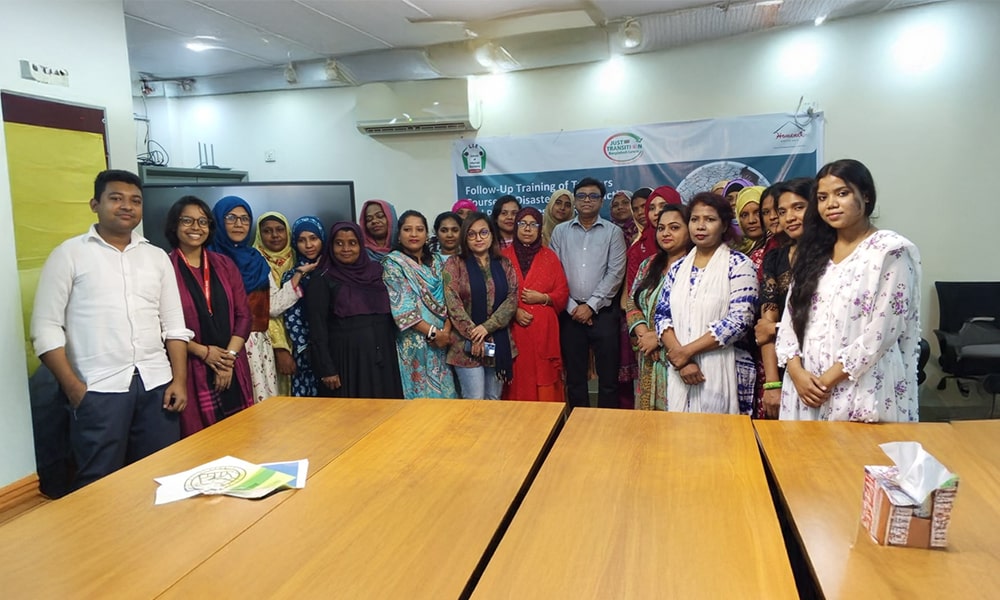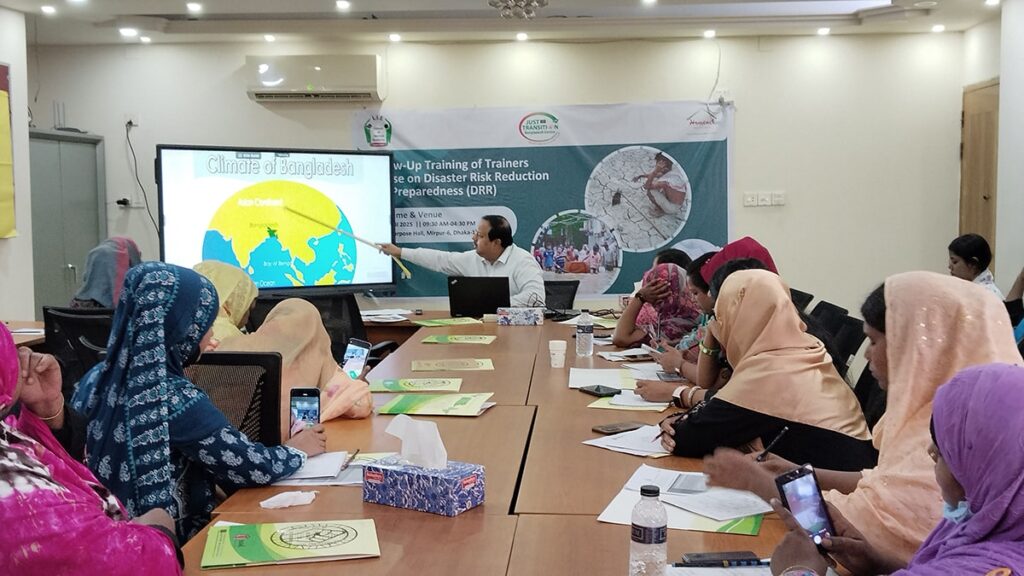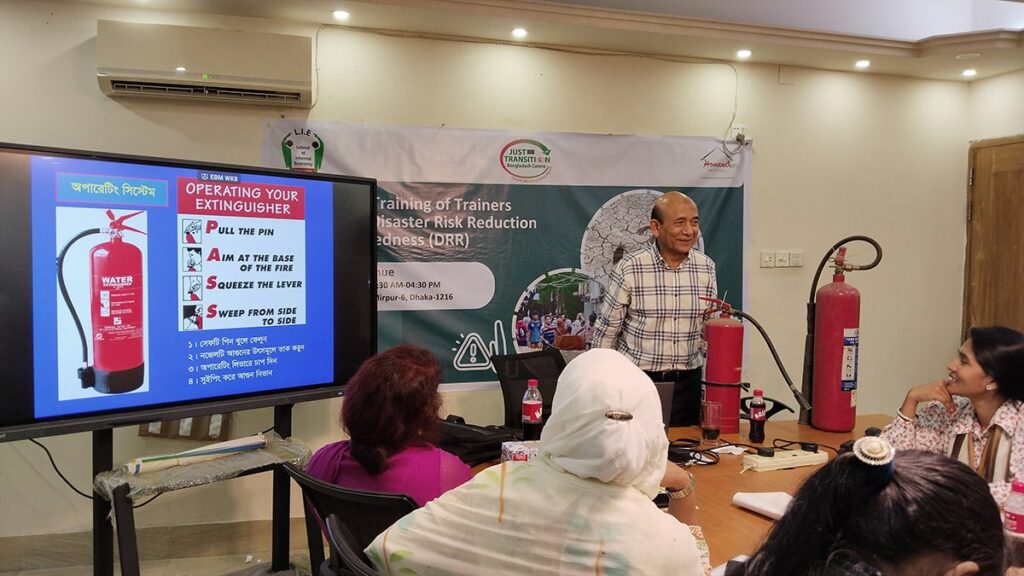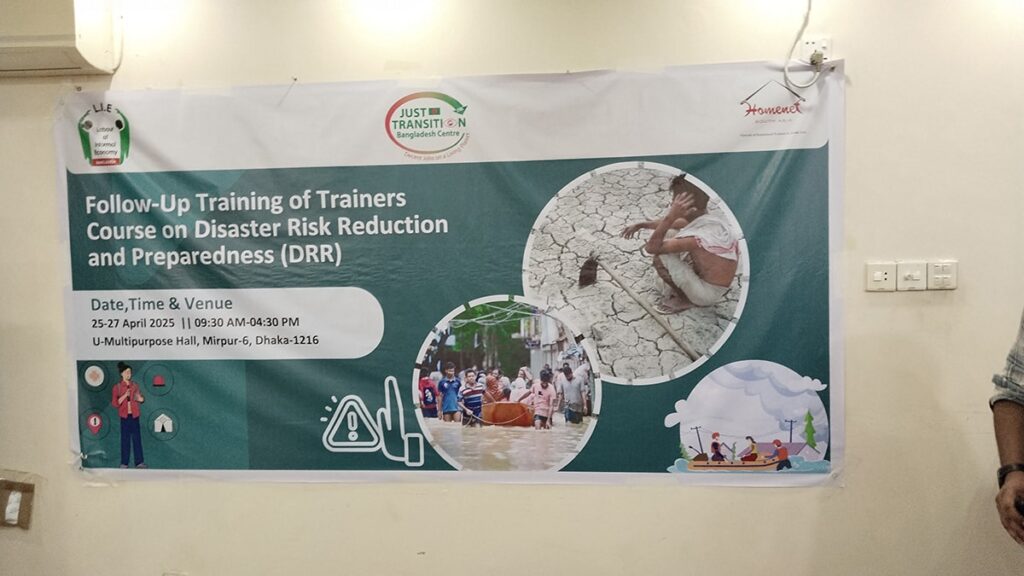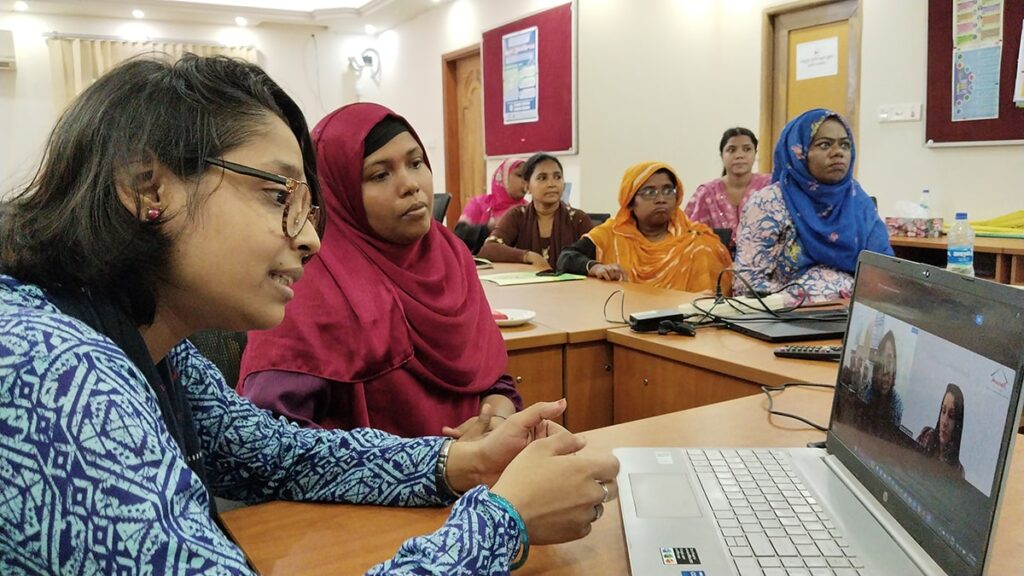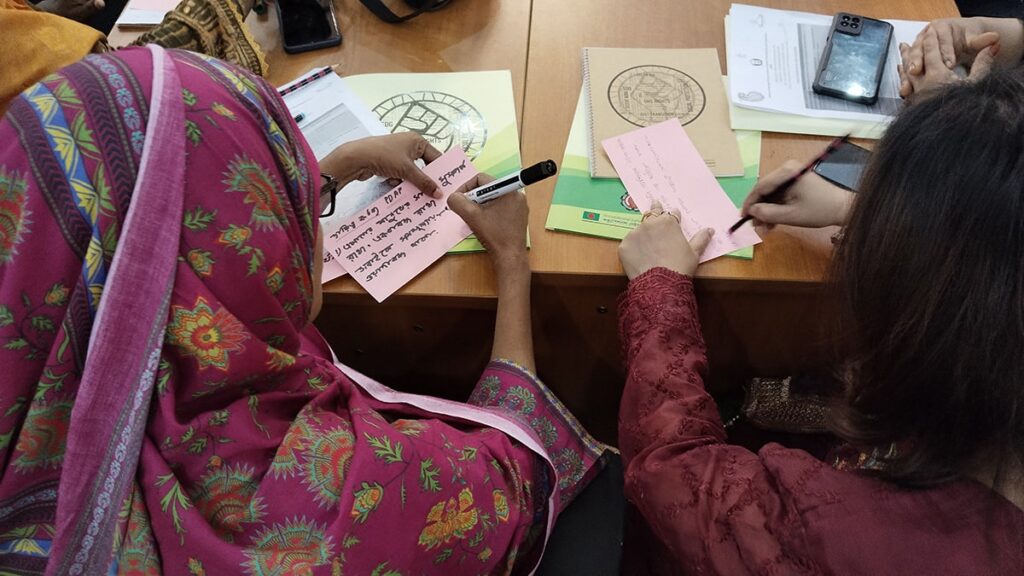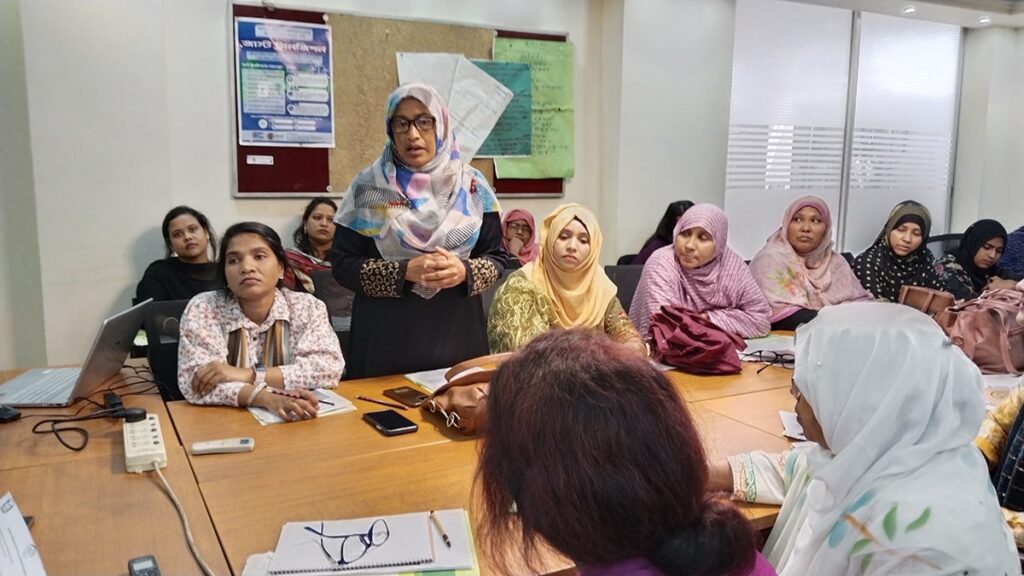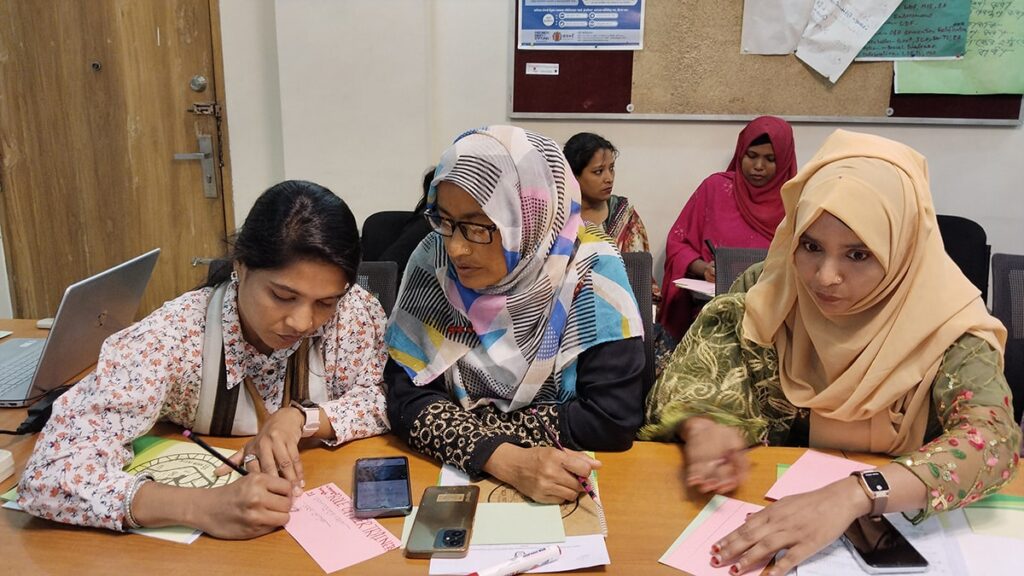By: Richa Macsuedon, Senior Programme Coordinator for HomeNet South Asia
Climate change may be a global concern, but its impact is deeply local, felt in the flood-prone backyards, overheated homes, and overcrowded neighbourhoods where home-based workers (HBWs) live and work. In response, HomeNet South Asia, along with Labour at Informal Economy (LIE), facilitated a three-day follow-up training from 25 – 27 April, 2025 in Bangladesh to strengthen the Disaster Risk Reduction capacities of grassroot women leaders.
This training brought together 25 dynamic HBW leaders from across regions such as Dhaka, Rajshahi, Narayangonj, Jessore, and Khulna. The goal was clear: build a shared understanding of climate-related risks and equip participants with practical, low-cost tools for mitigation, preparedness, and community response.Women-Led Solutions Rooted in Local Knowledge
Participants revisited the learnings of a previous training, engaging in role plays, group discussions, and planning exercises that explored both traditional and modern disaster coping techniques. From crafting banana-tree boats for transporting goods during floods to modifying tin roofs with cooling layers – the emphasis was on practical and replicable solutions rooted in the local context.
Sessions also explored the integration of solar energy, GIS-based risk mapping, and mobile communication tools like WhatsApp for disaster coordination. With storytelling and visual aids, the training underscored the value of accessible, community-based approaches to risk reduction, particularly for workers whose work is deeply affected by climate volatility.
From Knowledge to Action
The training culminated in the creation of region-specific two-year action plans, including greening initiatives, fire safety preparedness, flood resilience campaigns, and heatwave response strategies.
In many cases, participants had already initiated change, like digging canals to reduce urban heat or modifying roof structures to enhance ventilation. This training empowered them with the practical knowledge and awareness to continue engaging as agents of resilience in their community in newer ways. They are now better prepared to guide their communities in adapting to environmental challenges, bringing visibility and voice to those most vulnerable to climate impacts.


